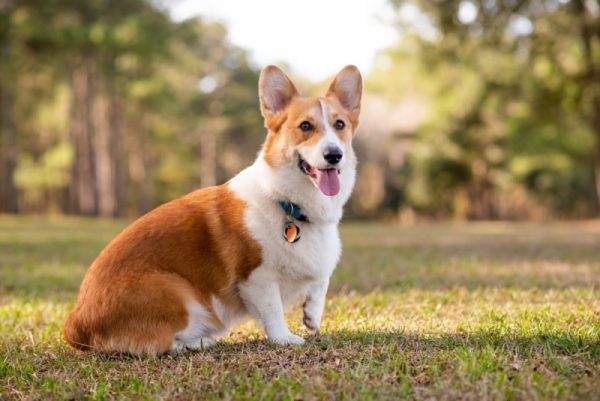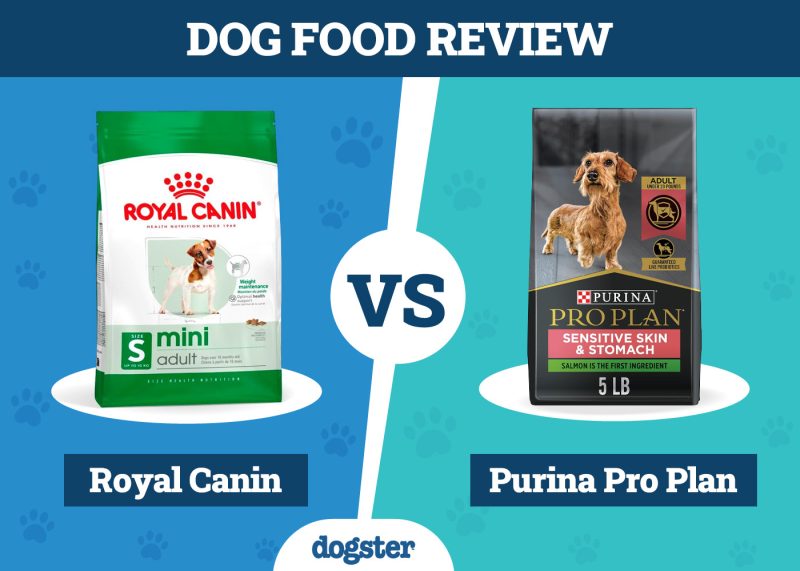In this article
The Cavalier King Charles Spaniel is descended from the Toy Spaniel and dates back to the Renaissance period. There’s a legend that King Charles II allowed this dog to enter parliament by special decree. While this story isn’t confirmed, it does indicate the status that this dog breed held within English court. The King Charles Spaniel isn’t just charming in appearance; they also have an endearing personality. They’ll happily take long walks or settle down in your lap, and they get along well with children.
The Cavalier King Charles Spaniel comes in 10 different colors: four standard colors and six substandard colors. While substandard colors aren’t permitted for dog show competitions, they are beautiful nonetheless.

The 4 Standard Cavalier King Charles Spaniel Colors
1. Black and Tan
Black and tan Cavaliers are the rarest but also the most well-known. This color is characterized by black body hair with tan highlights around the nails, cheeks, and eyebrows. Occasionally, tan markings appear inside the ears or on the legs.
Black and tan Cavaliers with white markings are considered high-standard dogs in dog shows, and the black and tan Cavalier King Charles Spaniel was the one famous in English court.

2. Black and White
Black and white Spaniels are extremely rare. They have a black body with white on the face, chest, and feet. This color is much sought after by breeders and dog lovers. Most black and white Cavaliers have tan markings, which are common in most color variations.
3. Blenheim
The most common Cavalier King Charles Spaniel color is Blenheim. The name comes from Blenheim Palace, where this breed was raised by the Duke of Marlborough (John Churchill) during the 18th century. The color itself is white with chestnut (light brown) markings that appear all over the body and around the eyes.
Most dogs of this color have a white muzzle with a chestnut blaze on the forehead. A chestnut-colored spot on the forehead is called a “Blenheim Kiss,” and much like the color name, there is a legend behind the nickname.
Legend states that while the Duke of Marlborough was away at battle, his wife took consolation in the company of their Spaniels. One of the dogs was expecting puppies, and she pressed her thumb against the forehead of this dog. When the battle was won, the Duke was greeted with five puppies, all bearing unique markings. The marking was dubbed the “Duchess Thumbprint” and later, the “Blenheim Kiss.”

4. Ruby
Only two solid colors appear among Cavalier King Charles Spaniels, and ruby is one of them. While the name implies a deep red, the coat of Ruby dogs is more auburn or chestnut colored. It is a fairly rare shade due to the fact that most Cavaliers have markings of some kind. Markings are considered confirmation faults by the American Kennel Club.


The 6 Substandard Cavalier King Charles Spaniel Colors
5. Merle
Merle-colored Cavaliers are not purebred dogs because the gene that codes for the color is not part of the breed standard. Merle coats are caused by a variation in a dominant gene that also gives dogs blue eyes and other rare coat colors.
Merle spots can be patterned and cover the whole body or part of it, while the ears are usually solid colored.
6. Chocolate
Chocolate Cavalier King Charles Spaniels are tricolored dogs that are a combination of white, ruby, and deep black. Standard breed colors include both chocolate and chocolate and white as official colors.
7. Tan
Tan Cavaliers have red-colored hair, but it is lighter than that of ruby-colored dogs. Unlike ruby, which is a standard color, tan dogs are considered substandard. The color is striking but it’s not overly common.

8. Tricolor
Tricolor coats have a white or black base with white, black, and tan markings. Markings appear around the eyes and ears, often divided by a blaze up the center of the muzzle. In the English court, the tricolor King Charles Cavalier was demoted to a “Prince Charles” Cavalier, as it was not a preferred dog color.

9. White
White Spaniels are rare, as the color comes from a genetic defect. White puppies are actually born with a lack of color in their hair rather than having a gene that codes for that color. In the case of Cavalier King Charles Spaniels, white dogs are albinos. This phenomenon can be found in any dog breed or animal species, including humans. Albinos will have pale skin, white hair, and pale eyes, as they have no color pigment in their bodies.
Albino dogs will generally not be bred due to the risk of passing on the condition. However, it is a gene mutation that can occur in any litter.
10. White Markings
Cavalier King Charles Spaniels with white markings make up the final coat color. The white markings occur from the piebald gene and can appear on any other color of Cavalier. White markings are considered substandard and will prevent a dog from competing in American Kennel Club-sanctioned shows.

What Is the Rarest Cavalier King Charles Spaniel Color?
According to the American Kennel Club, the rarest color is black and tan. They also consider this color the most appealing, but this is a matter of opinion.
What Colors Are Considered Breed Standards?
Only Blenheim, Ruby, Black and White, and Black and Tan Cavaliers can be registered with the American Kennel Club. All other colors are considered substandard.
Blenheim is the most common color among these. All the other colors on this list aren’t recognized as official colors, but they are beautiful nonetheless. Color standards are only relevant with regard to official dog shows.
Do Certain Coat Colors Come with Certain Health Conditions?
The only two colors that are connected with health conditions are merle and white.
White Cavaliers are albinos, so they are at risk for certain health conditions like skin cancer and light sensitivity. This is the case for any species with albinism, which is caused by the lack of pigment in their skin. Sores, bumps, and bruises that don’t heal properly should be carefully examined by a veterinarian for malignant disease. These dogs are also born with eye anomalies that can affect their vision, so they require extra care.
Merle-colored dogs are products of cross-breeding. While the color is common in breeds like Border Collies and Australian Shepherds, it occurs much less frequently in Cavalier King Charles Spaniels. This color expression requires the dog to carry what’s called the M allele on the PMEL gene. Since this gene is dominant, it will always be expressed in the form of a merle-colored coat if it is present, making it easy to determine which dogs have the gene.
If it was only the coat color that the M allele coded for, it likely wouldn’t be cause for concern. However, puppies that carry the gene are at risk of developing other issues associated with the allele. This includes developing large white patches on their skin, a decline in retinal pigment that can cause blindness, and declining numbers of cells in the inner ear, which can cause deafness.
It should be noted that with proper healthcare, merle dogs can live long, happy lives that last their full lifespan. But they are prone to conditions that other colors of Cavaliers are not and are usually not recommended for breeding.

Summary
There are four standard Cavalier King Charles Spaniel colors and six substandard colors. While only some are recognized for show dogs, all the colors are beautiful. Only two of these colors come from genetic defects that put dogs at risk for certain health conditions.
See also:
- Is a Cavalier King Charles Spaniel Hypoallergenic? Breed Facts & FAQ
- Do Cavalier King Charles Spaniels Like Water? Facts & Swimming Tips
Featured Image Credit: BJkenel, Shutterstock


















